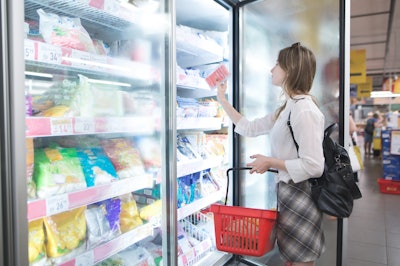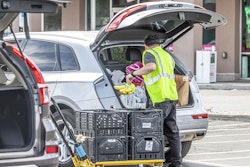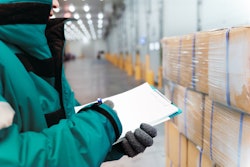
Retailers will have to continue to address the key dynamics of increased demand volatility and the step change in omnichannel purchases, which have created a number of challenges, including ensuring product availability for high customer service and executing on strategies to manage risks due to demand surges and supplier disruptions.
In particular, the grocery retail landscape is being challenged with three fundamental drivers:
● The changing consumer preferences with the move toward fresh, natural/organic/healthy, convenience foods and locally sourced products but at the same time looking for value.
● A significant shift in channel preferences with the need to support various store formats and omnichannel options.
● The need to respond to those changes while maintaining margins, service and efficiencies with optimal planning of inventory, sourcing, transportation and fulfillment.
As a recent grocery retail study by McKinsey points out, “the growth of online and the trend toward value are likely to put further pressure on grocers’ margins, especially given that the overall market may shrink once restaurants return.”
These transformational shifts in consumer behavior create unprecedented levels of variability, uncertainty and complexity in supply chains. Retailers are being forced to challenge the status quo and step up their supply chain competencies to successfully transform their businesses. There is a realization that to run an exceptional supply chain, it takes a commitment to leverage data and advanced analytics to make smart, fact-based decisions, while continuously evolving product offerings, supply chain strategies and execution capabilities.
Retailers have realized that they need to upend their traditional operating model with a digital operating model so that they can quickly analyze, optimize and evaluate complex decisions before taking action. Getting to this new operating model is a transformational journey that has great promise in delivering greater confidence and control over business outcomes.
Houston, we have a supply chain problem
Retailers constantly face operational issues during execution, no matter how well they plan assortment availability across channels, forecast demand using sales or shipment history, and carefully procure and place inventory. Any variety of factors could lead to inventory issues like out-of-stocks or dissatisfied customers, including promotional campaigns not driving sales, changes in customer behavior, disruptions in supplier material availability and transportation bottlenecks.
Controlling business outcomes with supply chain control towers
The planning organization may have the best-laid plans, but just the sheer volatility in the operational environment requires continuous course corrections, with scenario planning and evaluation of various competing alternatives.
Many retailers are now looking at control towers to address a multitude of supply chain blind spots, including unexpected supply shortages, network bottlenecks, response to disruptions and big changes in what consumers are purchasing and where they are purchasing. Control towers support retailers in sensing demand fluctuations as well as supply disruptions in real-time, translating that into various risks – the risk of poor customer service or the risk of lower revenues or the risk of lower margins due to expensive course corrections. The most advanced control towers diagnose the root causes of supply chain failures and prescribe a number of corrective actions along with their costs and tradeoffs.
The emerging best practice is to deploy cognitive control towers that are both analytical and operational. They not only provide end-to-end visibility from consumer purchase to supplier shipments, but also provide recommendations on what to do that address issues and enables users to choose from various options and act on them.
These control towers address the 3Ws of decision-making: What happened? What is likely to happen? What actions need to be taken?
Retailers increasingly struggle with getting the insights they need to answer these questions during planning as well as execution. This is costing them billions in value leakage—in terms of lost sales, consumer dissatisfaction, increased supply chain costs, excess inventory and lower organization productivity. Not to mention the adverse impact on the planet due to poor utilization of scarce resources by retailer’s global supply chains
Making control towers cognitive
Artificial intelligence (AI) and machine learning (ML) techniques have emerged as critical enablers of the 3Ws and provide cognitive capabilities to control towers. AI/ML would have limited value, if the item the consumer wants is not available or if an order promised for buy-online-pickup-in-store (BOPIS) is not ready in time.
● What happened? ML techniques provide diagnostic capabilities and can identify the root causes for fulfillment failure. There could be one cause or a chain of root causes that lead to service failure – items not in store and must be procured from a regional distribution center with inadequate lead times, workforce unavailable for BOPIS orders, missing items at pick locations, limited pickup window duration for customers, supply disruptions at import distribution centers, excess number/variety of items in the order or inadequate retail store space.
● What is likely to happen? The predictive capabilities of ML are ideal in understanding the effects of forward-looking drivers of demand to forecast a demand surge in a specific region, perhaps due to local events, social media buzz, unusual weather or competitor supply disruptions.
● What actions need to be taken? AI/ML can provide prescriptive recommendations with an action or a sequence of actions to various roles in the supply chain so that fulfillment execution is ensured.
Control towers power the Monday morning jumpstart
When Monday morning arrives, the merchandising and operations teams are frantically piecing together the previous week’s performance. They scramble to put together the net sales revenue, volume sold by department and region, measure the effectiveness of promotions and markdowns, identify items that beat their targets or underperformed, uncover inventory issues and assess labor shortages. A lot of blood, sweat and Excel is devoted to root cause analysis of operational failures. This weekly ritual involves teams from every corner of the business, often takes up a full day (or two) and frequently does not deliver the answers needed in time to take action for the current week or anticipate issues in the subsequent week.
Now, imagine that Mondays are driven by knowledge and insights from a cognitive control tower. By the time the teams arrive in their offices, the control tower has done all that number-crunching, highlighted exceptions and served up recommendations to address sales weaknesses, reduce stockouts, leveraged excess stocks and adjusted purchase orders. Instead of Monday morning debates over conflicting numbers and pointing fingers, retailers get action-oriented recommendations to move forward immediately, and more time to focus on making decisions to delight the consumer.
In fact, many retailers across segments are already using data-driven insights to initiate significant improvements to their businesses. As AI/ML systems become more prevalent, retailers can layer this technology on top of existing platforms to create control towers and leverage existing investments to deliver insights and decision making in a matter of months — without the need for multi-year transformations or science experiments that do not scale beyond pilot efforts.




















